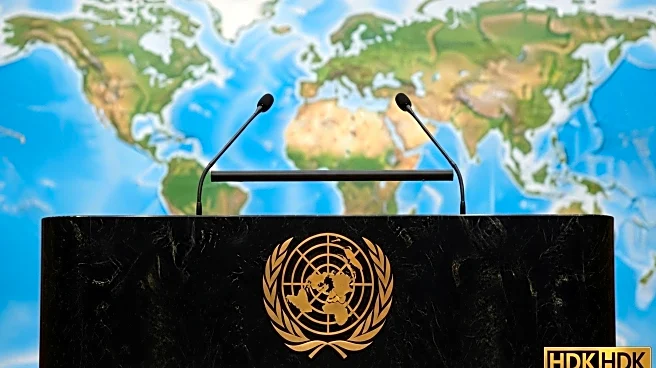What's Happening?
A group of politicians, scientists, and academics have announced the Global Call for AI Red Lines at the United Nations General Assembly. This initiative seeks to establish broad guardrails to prevent universally unacceptable risks associated with artificial intelligence. The proposal has garnered over 200 signatures from industry experts, political leaders, and Nobel Prize winners, including former President of Ireland Mary Robinson and former President of Colombia Juan Manuel Santos. The call aims to have these red lines established by the end of 2026, focusing on prohibiting AI uses such as launching nuclear weapons or mass surveillance, and ensuring AI can be terminated by human override.
Why It's Important?
The initiative highlights the urgent need for international cooperation in regulating AI technologies, which are rapidly advancing and pose significant risks if left unchecked. Establishing global red lines could prevent misuse of AI in critical areas such as military applications and surveillance, potentially safeguarding human rights and global security. The involvement of high-profile figures and experts underscores the importance of addressing these issues at a global level, as AI continues to influence various sectors, including national security and privacy.
What's Next?
Countries are encouraged to host summits and working groups to discuss and agree on the specifics of these red lines. The United States has already committed to not allowing AI to control nuclear weapons, but there are challenges in aligning international policies, especially with differing national interests. The success of this initiative will depend on the ability of governments to collaborate and compromise on these critical issues by the proposed deadline of 2026.










